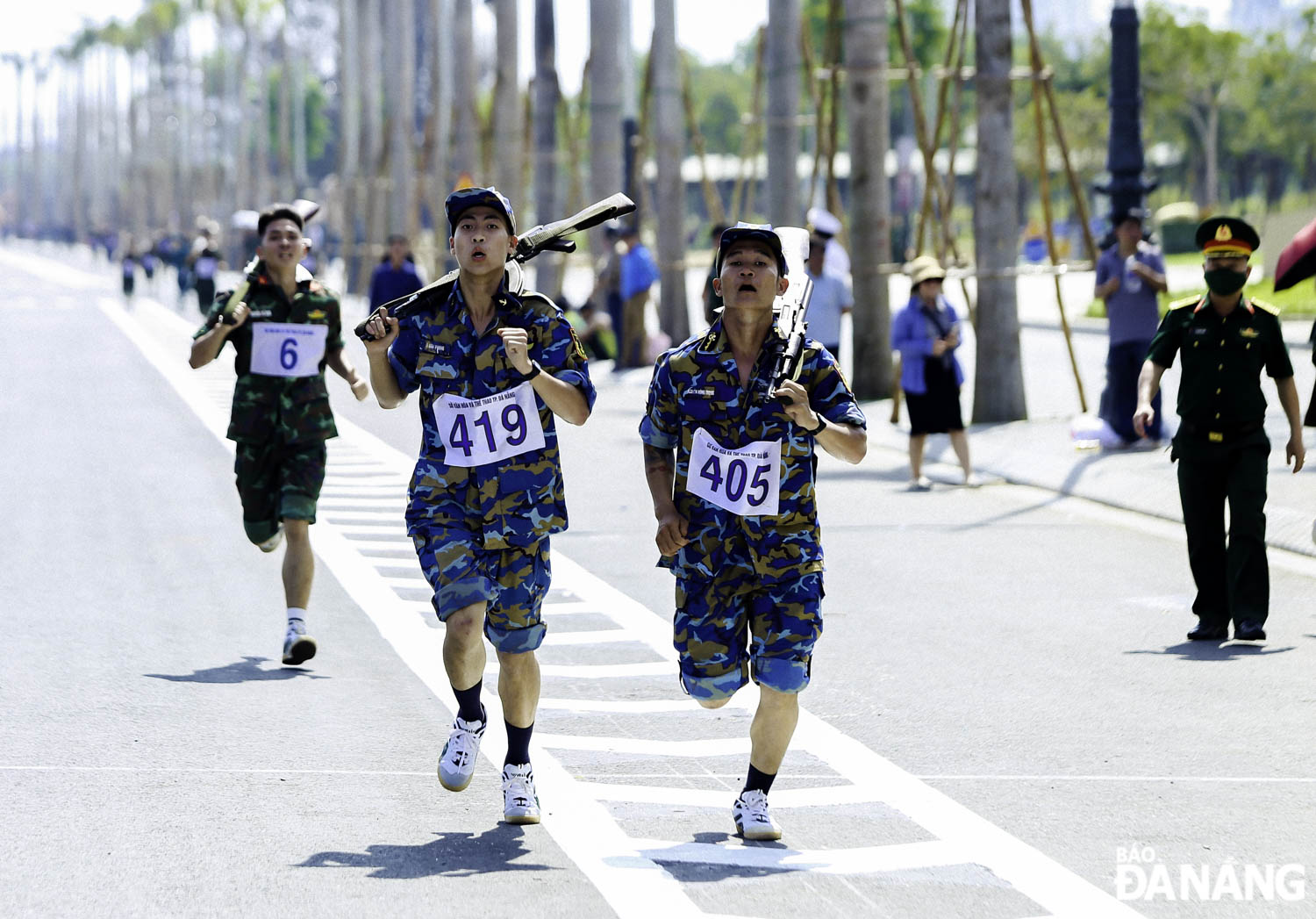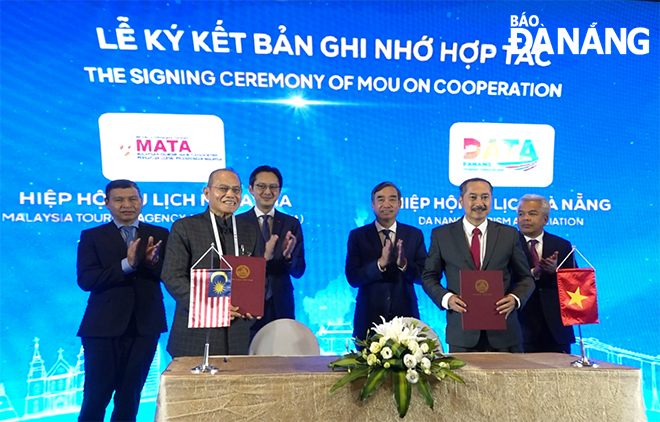Building and expanding transport infrastructure links in economic development cooperation
On February 19, 2025, the Da Nang People's Committee issued Decision No. 484/QD-UBND, which approved a proposal for economic development cooperation between Da Nang and the provinces in the South Central Coast and Central Highlands regions, as well as along the East-West Economic Corridor 2. This decision outlines the city's plan to develop transportation infrastructure with a focus on integrating all five modes of transport.
 |
| Da Nang will have all 5 modes of transportation in the near future. Photo: THANH LAN |
Regarding road development, there will be simultaneous investment in constructing the Da Nang - Thanh My - Ngoc Hoi - Bo Y expressway, which will connect to the Da Nang - Quang Ngai expressway. Additionally, the completion of the La Son - Tuy Loan expressway is planned. The section of National Highway 14B that runs through Da Nang will be upgraded to a 6-lane urban main road, while the section of National Highway 14G will be developed to meet at least the minimum standards of a level IV road with two lanes.
Furthermore, there will be enhancements to the connecting infrastructure of the East - West Economic Corridor 2, which links Da Nang to Laos, Thailand, and Myanmar via National Highways 14B and 14D, as well as strengthening connections to the Nam Giang international border gate in Quang Nam Province. The construction of a public transport route (such as an urban railway or an equivalent system) to connect Da Nang with Hoi An in Quang Nam Province and Lang Co Town in Hue City will be carried out.
Regarding railways, a high-speed railway and a national regular railway will be built along the same corridor, running parallel to the expressway to the east. Additionally, the Da Nang - Kon Tum railway will be planned to connect with the North-South national railway at the new Da Nang Station after 2030.
For aviation, the civil aviation area and aircraft parking lot will be upgraded and expanded to increase capacity to approximately 25 million passengers per year, transforming it into a specialized aviation logistics hub. By 2050, further expansions will aim to accommodate 30 million passengers annually, featuring diverse functional zones and high-quality services.
 |
| Da Nang has the advantage of developed transport infrastructure, especially seaports. IN PHOTO: The Da Nang Port has invested in many modern equipment. Photo: THANH LAN |
According to the proposal from the municipal People's Committee, the Da Nang Port will be developed to fulfill all three functions: import and export of goods, transit of goods, and logistics. This development aims to develop the Da Nang Port as an international gateway for Central Viet Nam (Type IA) in the long term. Furthermore, the Da Nang Port will be linked with Chan May Port and Chu Lai Port to form a port cluster, creating a major commercial port that is on par with Saigon Port and Hai Phong Port.
Importance will be attached to reviewing and adjusting planning while deciding on key logistics infrastructure investment projects in the region. Also, heed will be on renovating and converting the Tien Sa seaport commercial complex into a tourist port after 2030. Once the Lien Chieu cargo port is established and operational, the Tien Sa Port will officially become a tourist port, serving as a gateway for sea tourism to the international community for the entire Central Coast region.
The city aims to develop inland waterway passenger transport routes for both travel needs and tourism enhancement. Proposed routes include Ha Long - Da Nang, Da Nang - Ho Chi Minh City, Hue - Thuan An - Tien Sa Port - Song Han Port, Da Nang - Ly Son Island, Da Nang - Cham Island (Quang Nam Province), and Da Nang - Con Co Island (Quang Tri Province).
In addition, there are plans for international passenger transport routes directly connecting Da Nang seaport to countries including the USA, Canada, Australia, India, and various nations in Europe and Asia. Moreover, the Han River - Vinh Dien River route will be converted into a local route once it meets the criteria outlined in the national inland waterway planning guidelines.
According to the Da Nang Bridge and Road Science and Technology Association, localities in the region need to prioritise the construction and completion of integrated infrastructure to develop the Da Nang - Quang Nam - Quang Ngai - Nam Giang Border Gate - Dak Ta Oc - Laos - Thailand corridor through National Highways 14B, 14E, and 14D, as well as the Da Nang - Quang Ngai Expressway. Also, efforts should be made to establish the Bo Y - Quang Nam - Da Nang economic corridor, which will connect the provinces of the Northern Central Highlands with the Mid-central region and seaports, thereby promoting socio-economic development in these areas.
MSc. Vo Van Toan, Director of Ky Viet Construction Engineering Investment and Consulting JSC, said that the linkage proposal of Da Nang is completely reasonable and scientific when taking advantage of the end point of the East - West and East - West 2 Economic Corridors, connecting the Pacific and Indian Ocean regions to develop an integrated logistics service chain for the city.
In particular, taking aviation and seaport logistics services as development priorities in the multimodal logistics service system will enhance the inherent advantages of Da Nang. It is essential to develop regional, local, and specialized logistics centres to ensure the availability of logistics services that meet the production and import-export needs of Da Nang and the Mid-central Highlands region. This approach should also enable the provision of competitive logistics services for international transit cargo flows along the East-West and East-West 2 economic corridors, which connect to Da Nang's seaports. Such developments will create opportunities for regional linkages between the mid-central Highlands and the South Central Coast, with Da Nang playing a central role.
Mr. Toan noted that there are several ports in the region (Chan May, Tien Sa, Ky Ha, Dung Quat, and Quy Nhon), which greatly benefit the development of the marine economy. To maximize efficiency, it is crucial to connect and link these seaports, leveraging each other's infrastructure to form a port cluster or a large commercial port.
Reporting by THANH LAN - Translating by M.DUNG








